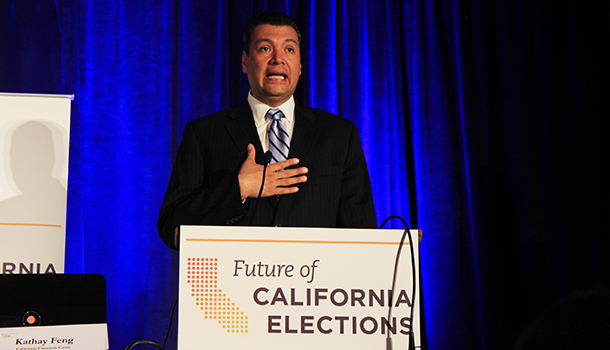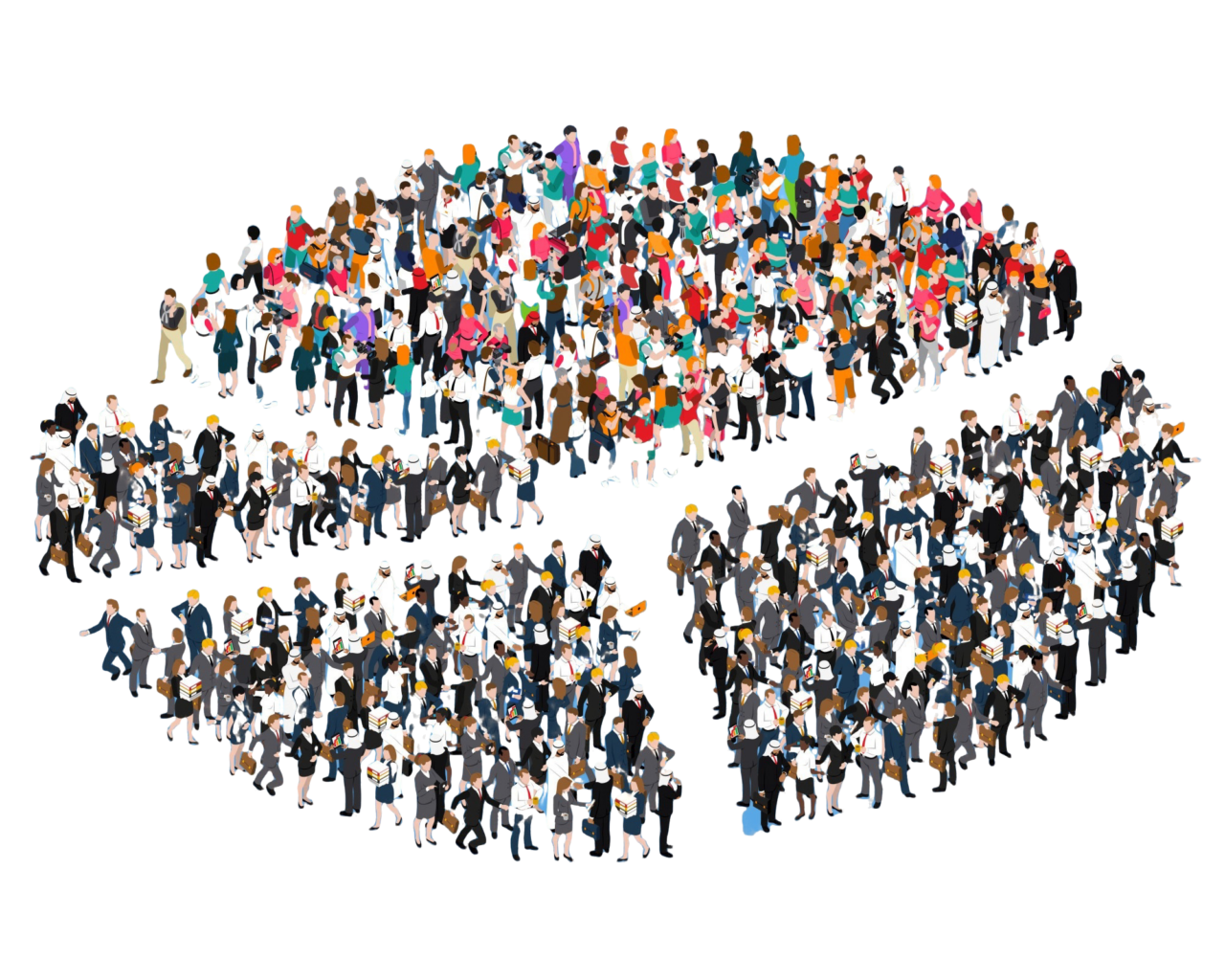California elections officials, voting advocates tackle low voter turnout

California Secretary of State Alex Padilla. (Photo Credit: John Guenther)
Originally posted on CA Fwd Reporting.
When hundreds of Californians got together to roll up their sleeves and talk about elections last week, they were joined by a looming, unwanted problem.
“And that voter turnout. That’s really the elephant in the room, isn’t it?” said California Secretary of State Alex Padilla. “November 2014. June 2014. We can and must do better. And there is no magic wand to get more and more Californians to vote.”
The room was filled for the Future of California Elections (FOCE) annual conference in Sacramento. The theme of the conference was building a more inclusive democracy, taking up issues of elections funding, language and disability access, election data and other nuts-and-bolts. But, the low voter turnout and what to do about it dominated several of the discussions.
Based on the conversations, it’s clear there’s no single reason for the low numbers. Trying to narrow it down to two, Padilla shared that people surveyed say they didn’t feel their vote counted and others just didn’t know the election was coming up (“Believe it or not”); and the newly elected elections chief suggested giving Election Day more attention via social media, newspapers and CalTrans freeway signs.
“That’s real cutting edge technology,” joked Padilla.
Arming voters with more info
Several panelists stressed the importance of arming people with more information, not just the basics of when Election Day is but also what’s on the ballot. That included touting the launch of the Voter’s Edge tool before the last election and Pew’s Voting Information Project.
“We should so be treating voter information as though it’s actually really important that everyone gets it. Wouldn’t that be cool?”, asked Karla Zombro, field director of California Calls, a nonprofit that does get-out-the-vote drives. “But…the best voter information in the world still can’t talk. Voter guides just don’t talk.”
Given many potential voters aren’t even paying attention, advocates talked about different ways to share voting information by going to “where people are,” with some, like Zombro, quite literally meaning physically going where people are.
“We also do door-to-door and, interestingly with young voters, they so don’t answer the phone,” said Zombro. “Two to one, we find young people on the doors. Because, even if they’re living at home with the older family members, those folks might answer the phone but they always make the young one go get the door.”
Getting out youth vote
@MelissaBreach: If you were 18 in CA in 2014, you were more likely to get arrested than vote. #FOCE2015
— Catherine Hazelton (@Hazelton4Irvine) February 19, 2015
The factoid that only 8.2 percent of Californians 18-24 voted in the November election put the panel on youth voting in stark perspective. With many students moving often and still being registered at home, logistics are one reason for the low turnout. But speakers made it clear the cynicism issue can be more of a problem with young voters because of a lack of connection with the issues being talked about by candidates.
“When you are part of a constituency that is not being directly talked to or asked to come out to participate, that is a huge reason most people don’t participate,” said Ashley Spillane, president of Rock the Vote. “And they aren’t asked to and they’re not expected to show up.”
One solution agreed upon was starting earlier with more voter registration in high school, but also doing more to educate young people about the election process earlier and getting more useful information on the ballot to those who don’t know why the decisions important.
“If I’m a freshman in college and I’m voting in an election and there’s all these positions for the Board of Equalization, I don’t know what that means,” said Robert Frazier, government relations coordinator at California State Student Association. “I don’t know why I should vote for someone that sits on this board that has something to do with equalization.”
The future of voting should be now
More than just increasing turnout numbers, others are looking at taking the process out of the previous century and farther ahead of the tech curve. The office of Dean Logan, the Registrar-Recorder/County Clerk of Los Angeles County, is currently building its own voting machine to make the voting experience better for people on Election Day.
“I think that we’re hearing loud and clear that voters want an experience that’s meaningful, it’s intuitive and that it fits with the way in which they interact with other activities. And, to quote one of my students…they described the current process as ‘cold, old and impersonal,'” said Logan, addressing the conference. “And that’s really not the image that we want for voting.”
California has made some recent strides in election reform. Same day registration is on the way in the state. A law approved last year allows ballots postmarked on Election Day to be accepted until 3 days later, while another law made significant upgrades the ballot initiative process.
But there’s a lot more the state and counties can do in the coming elections. The speaker who created the most buzz at the FOCE conference was Amber McReynolds, director of the elections division at the Office of the Denver Clerk and Recorder, and also one of the authors of Colorado’s recent election modernization bill of 2013.
Some of Colorado’s elections policies had created a lot of confusion among voters and the state also had a high number of ballots being casted and counted provisionally.
“What didn’t make sense is, ‘Why are we spending all of this money and all of these resources processing ballots as a provisional when it could have been a normal ballot?'” said McReynolds.
The state’s modernization upgraded the process with same-day registration and gave voters a longer list of ways to submit their ballot: by mail and drop-off, voting in person early at voting centers, or voting on Election Day. These and other changes resulted in a 98 percent reduction of provisional ballots and a cost savings for counties over previous elections.
And California’s counties will need to be on the look out for cost savings now more than ever. As pointed out at the conference, the cost of elections for counties from 1998 to 2011 have nearly tripled from $87 million to $245 million. The good news is that regional collaborative efforts to take on the issues like low voter turnout at times of budget uncertainty are being noticed.
“The orientation toward serving customers when the customers are the American people really allows for a great number of innovations to flourish,” said John C. Fortier, a member of the Presidential Commission on Election Administration. “I think the very fact that this conference shows the way that California thinks about this sort of thing differently…there aren’t many communities where election officials and advocates…actually sit down in one place and think about how we could all do this better.”
Keep an eye out for more videos from FOCE on our blog and follow us on Twitter to keep up to date.
Originally posted on CA Fwd Reporting.

Dr. Ansari on health care’s future amid demographic shifts
Original story on permanente.org During a recent CEO workgroup panel, “Advancing Your Culture…
December 23, 2024
Drs. Hoberman and Nguyen on preparing for health care AI
Original story on permanente.org Many questions surround the advancements of artificial intelligence in…
October 30, 2024